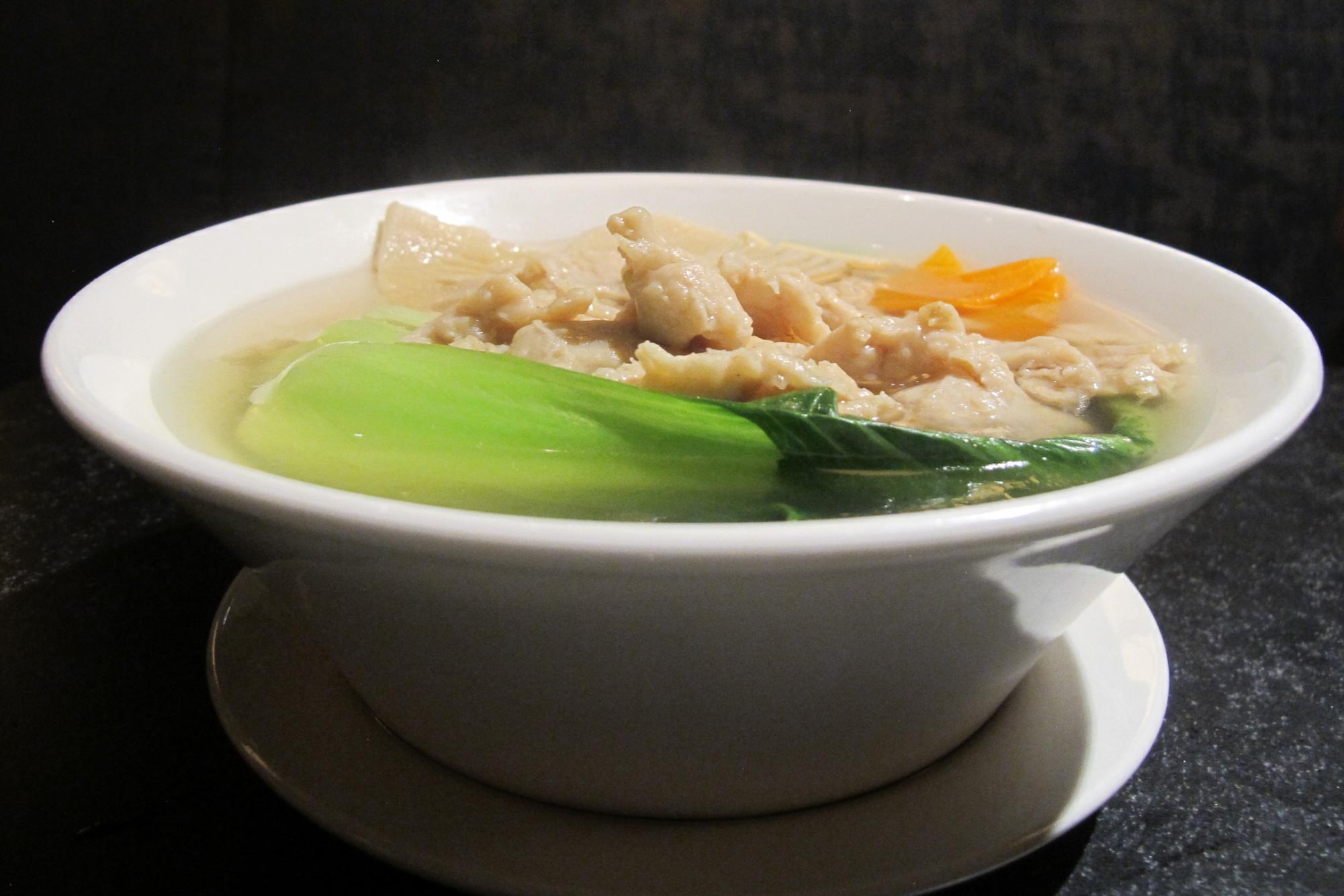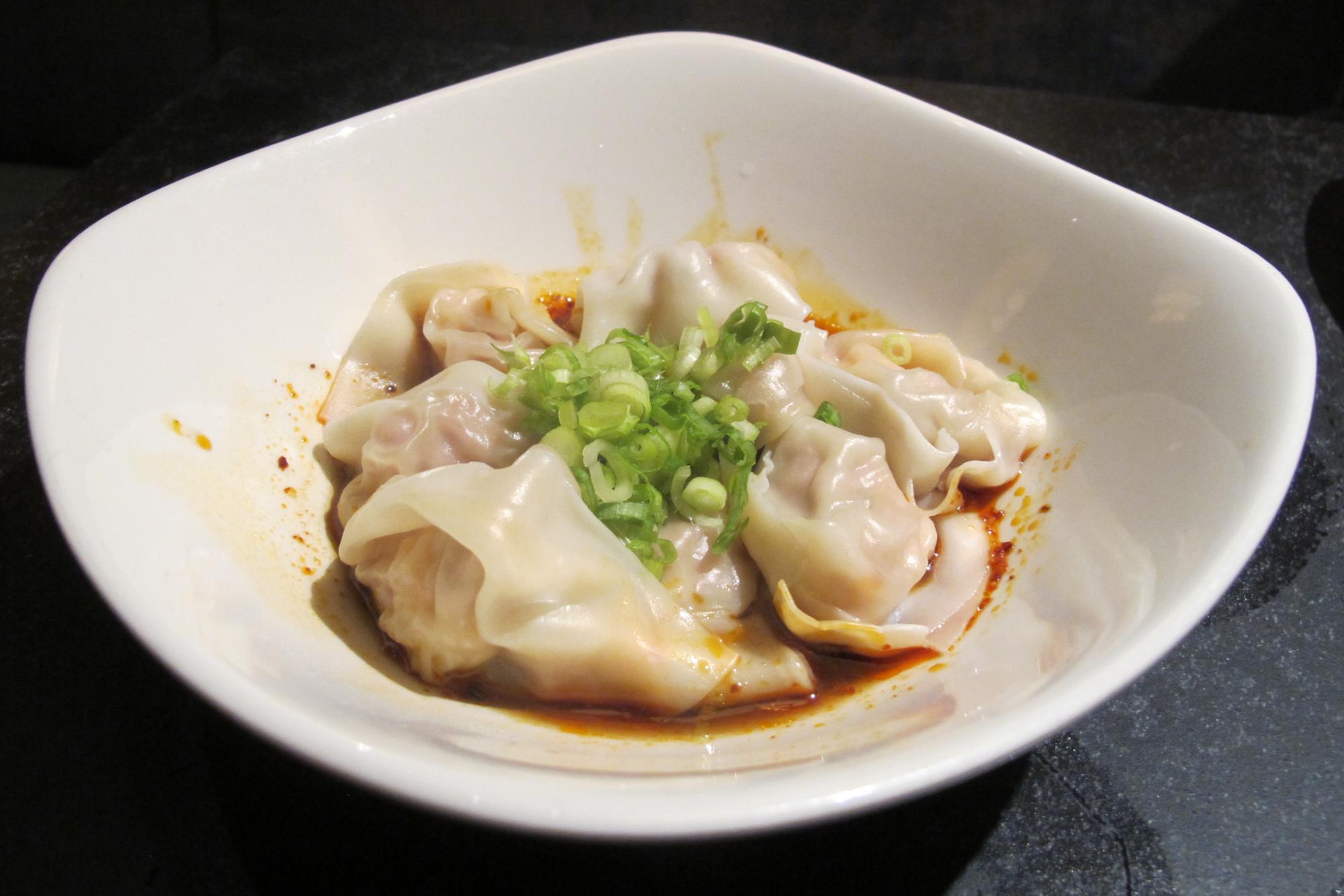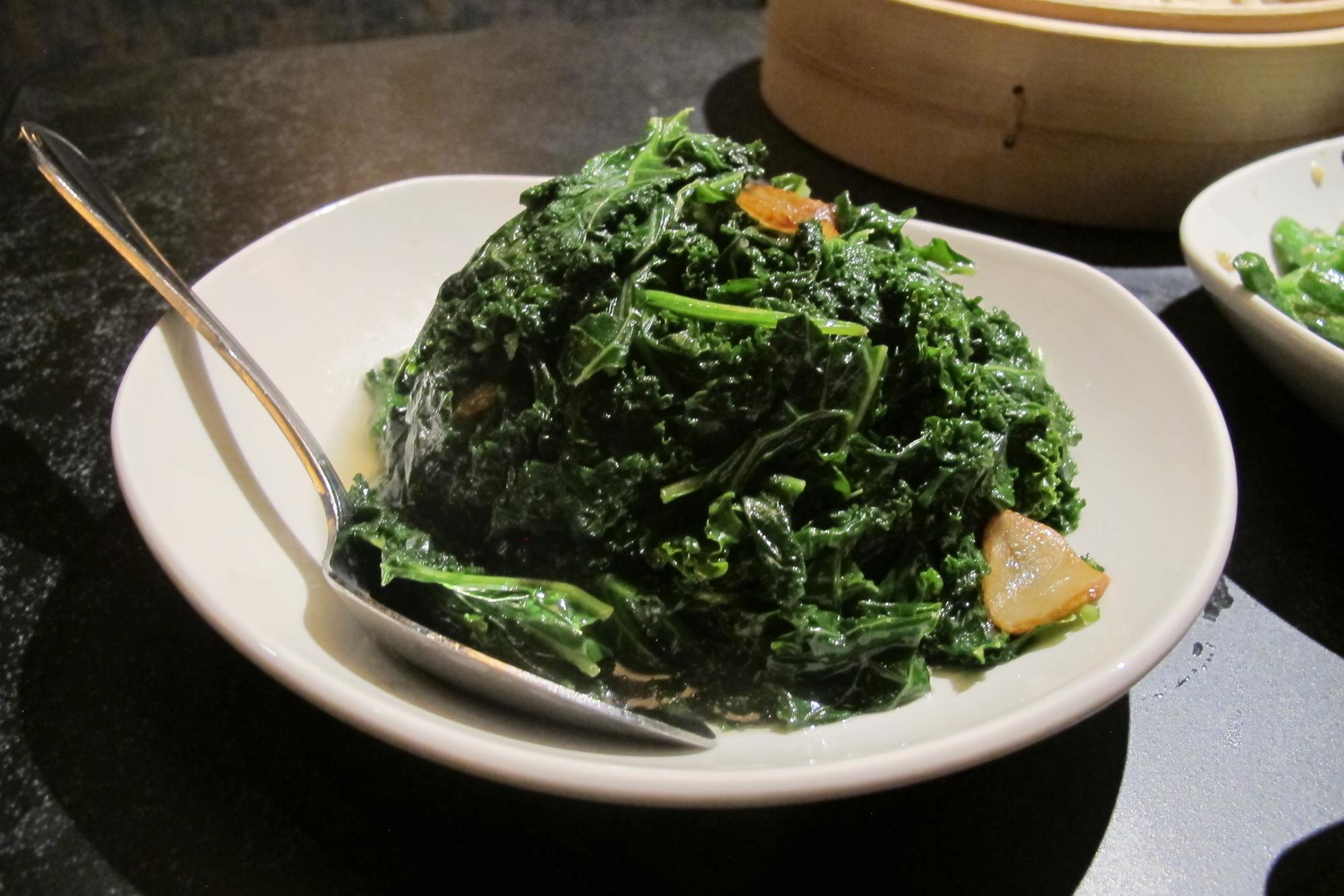On the corner of West 51st Street and Broadway, there’s a big glass box. It isn’t a futuristic technology pop-up, or a modern art installation, or one of those transparent public bathrooms from Japan. The box is none other than the entrance to Din Tai Fung — a world-class Chinese restaurant chain, or as you might know it, that place from TikTok with the chocolate dumplings and cucumber salad.
My earliest memory of Din Tai Fung dates back to nearly 15 years ago, when my grandmother would bring home a bowl of the sliced chicken noodle soup. This particular dish, being the sensory wonder it is, lives eternally in my mind. The chicken is tender and thinly sliced, while the noodles, accompanied by pieces of carrot, bok choy and fresh bamboo shoots — not the salty ones you find in ramen — are masterfully chewy and made in house. But the MVP might just be the broth — simple in flavor, light in color and exactly what I want to drink when I wake up every morning. It is, in other words, the gastronomic equivalent of a big hug.

I extend my thanks to the Din Tai Fung gods for planting a restaurant in Torrance, my hometown in Southern California. Long before its days of internet fame, Din Tai Fung was a household name in my community, and there were rarely days when the wait time was less than two hours. Today, the restaurant is even more packed with regulars and newcomers alike — and its status as a cultural phenomenon is only growing.
It’s pretty rare to find a Chinese restaurant chain that so effortlessly blends authenticity with approachability. Many of Din Tai Fung’s most popular dishes, such as the shrimp and pork spicy wontons and the Shanghai rice cakes, have strong roots within Chinese culture — yet are presented in a way that appeals to diners of diverse backgrounds. The restaurant doesn’t exactly fit into the category of fine dining, but the food isn’t cheap either — a 10-piece of Din Tai Fung’s famous xiao long bao, also known as soup dumplings, costs $18.50, which you could get in Chinatown for almost half the price. For many Chinese-American families, hole-in-the-wall Chinese restaurants are appropriate for both casual afternoon meals and birthday dinners. I’d argue that Din Tai Fung, while possibly the antithesis of a hole-in-the-wall, can do the same.
“Chinese food sits at curious intersections in the West,” Jing Gao, founder of the Chinese food condiment company Fly by Jing, wrote for Food & Wine in 2021. “It is both completely ubiquitous and exotified beyond recognition. It’s expected to fit into everyone’s individual ideals of ‘authenticity,’ formed by vastly differing experiences from person to person.”


Din Tai Fung, it seems, doesn’t fit into the traditional boxes that we place Chinese restaurants in. It’s a global corporation with more than 170 locations — in Hong Kong, it’s a Michelin-star restaurant. Yet, it’s also a popular chain along the West Coast, and more recently one of New York City’s hottest food spots.
In July, Manhattan became home to the largest Din Tai Fung in the world — 25,000 square feet of sleek dark wooden tables lit by orange-hued, lantern-like chandeliers. As I entered the restaurant last week, I felt as if I were walking into an upscale hotel. With a winding spiral staircase and two separate lobby-like waiting areas, the restaurant’s grandeur matches its reputation. While the New York City location is awe-inspiring in its own right, what truly left an impression on me was not how unique it was, but rather the way it made me feel at home, nearly 3,000 miles away.
At a restaurant as consistent and detail-oriented as Din Tai Fung — where every soup dumpling has exactly 18 folds — each bite offers nostalgia with a hint of novelty. There aren’t many culinary experiences quite like watching a server unveil 10 quaint xiao long bao right in front of you. When its bamboo lid is lifted, the basket of soup dumplings emanates steam just barely scented with the smell of freshly cooked dough. Din Tai Fung’s menu is also filled with hidden gems unknown to influencers, my personal favorite of which is the stir-fried kale — yes, kale. How the restaurant’s sauteed green beans remain impossibly crisp will always be an enigma to me — high heat? A quick blanch? A magical wok? I’d love to know their secrets.


I’m not convinced Din Tai Fung has any secrets at all — other than tried-and-true recipes and a precise, efficient system of service that shapes your meal down to every last detail. This might sound overly robotic, but somehow, it translates into food that makes me feel nostalgic, loved and joyful all at once.
Contact Lauren Ng at [email protected].





















































































































































